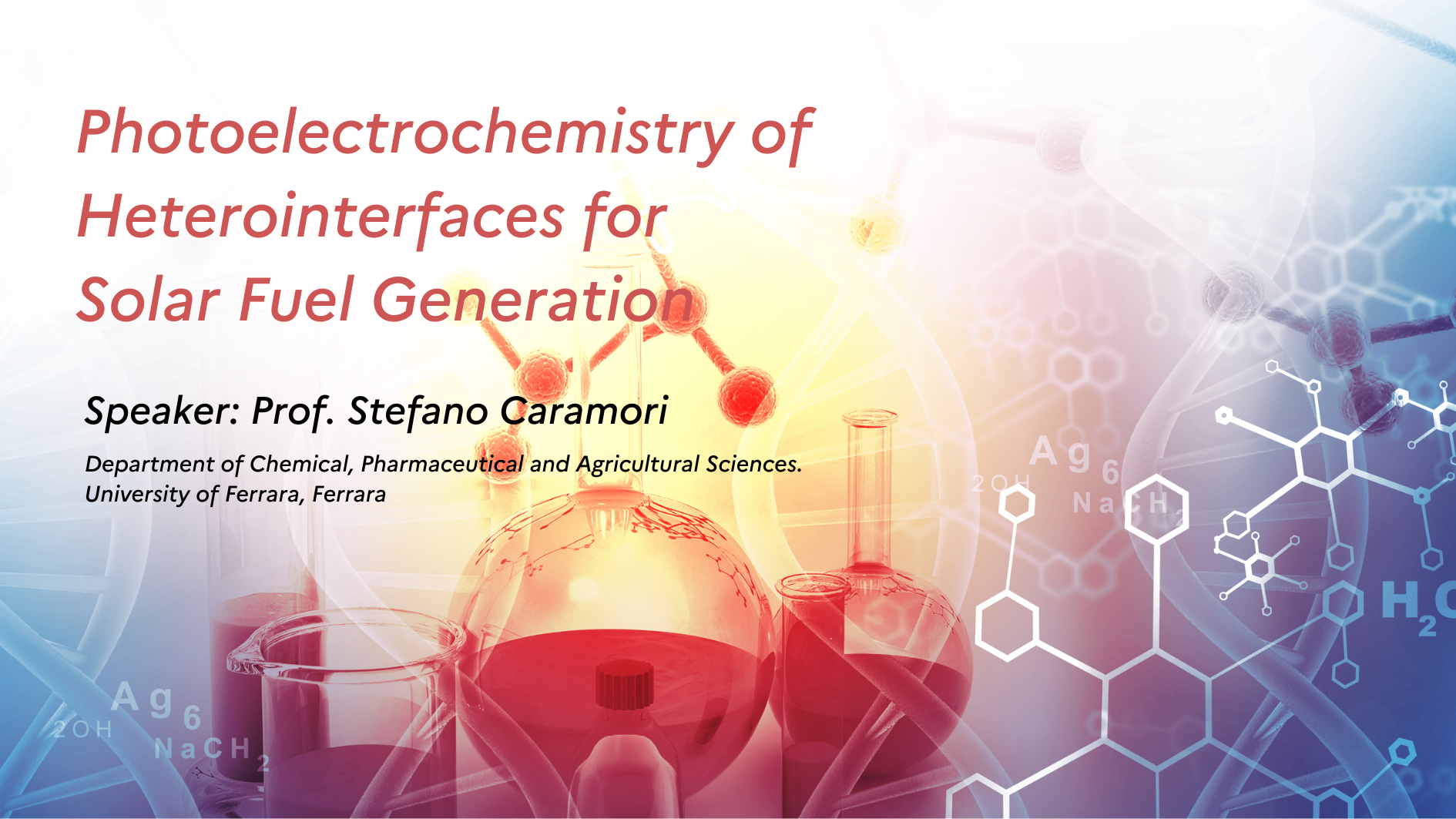
Photoelectrochemistry of Heterointerfaces for Solar Fuel Generation
On 25th January 2023, Prof. Stefano Caramori, Department of Chemical and Pharmaceutical Sciences, University of Ferrara, held a seminar Photoelectrochemistry of Heterointerfaces for Solar Fuels Generation at the University of Trento, Italy, where he disseminated part of the CONDOR activity.
Abstract : Abundant n-type metal oxides like TiO2, Fe2O3, WO3 and BiVO4 have been intensely studied in the framework of photoelectrochemical oxidation processes, owing to their availability, ease of preparation and large driving force for carrying out oxidation reactions, among which the oxygen evolution reaction is the most prominent. Once recombination reactions are overcome, electrons extracted from either water, or from other conveniently oxidazable chemical species, can be employed in the generation of solar hydrogen, according to a virtually inexhaustible virtuous cycle. Nevertheless, the theoretical STH (Solar to Hydrogen Conversion Efficiency) of most of these n species remains well below the expected thermodynamic limit, due to the persistence of energy wasting recombination reactions. The improvement of these materials for photoelectrochemical applications often relies in the decoration of the surface of these photoanodic materials with charge transfer catalysts, or the formation of heterojunctions which improve the charge separation, often via electric-field effects. The exact mechanism through which these interfacial modifications act on the charge transfer dynamics is often elusive and sometimes misinterpreted. In this lecture, after an introduction about the principles of semiconductor (photo)electrochemistry, some case studies involving the application of time resolved and/or frequency resolved techniques to selected semiconductor interfaces, like hematite and WO3/BiVO4 will be reviewed.
The full presentation can be found HERE.